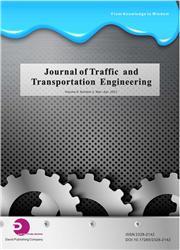Predictors and Risk Perceptions of Using Cell Phones while Driving among Young Adult Drivers
引用次数: 1
Abstract
: The Philippines is expecting a rise in the number of drivers that use mobile phones while driving. It is known as the “texting capital of the world”. The objectives of this study were to determine the predictors, risk perceptions and the prevalence of cell phone use while driving among trainee residents of the University of the Philippines-Philippine General Hospital. This cross-sectional study employed total enumeration. A survey was first distributed to the target population, followed by a focus group discussion. Chi-square and multiple logistic regression were used to analyze data. Included in the final analysis were 175 drivers aged 25-30 years (mean = 27.90 + 1.34). There was no significant difference in the risk perceptions of cell phone users vs. non-users, and most perceived hands-free devices safer to use ( p = 0.030). The reported prevalence is 90.68%; drivers have a significant overall unsafe attitude ( p = 0.007), and an unsafe attitude when using handsets when driving, even when this is known to be dangerous ( p = 0.003). In conclusion, driving with hands-free devices was perceived to be safer, although drivers have a high overall unsafe attitude. Driving for more than two years and having an unsafe attitude were found to be significant predictors of cell phone use while driving. Countermeasures must take into account these factors when instituting behavioral modification strategies and road safety policies concerning unsafe and distracted driving.年轻成年司机驾驶时使用手机的预测因素和风险认知
当前位置菲律宾驾驶时使用手机的司机数量预计会增加。它被称为“世界短信之都”。本研究的目的是确定菲律宾大学-菲律宾总医院实习住院医师驾驶时使用手机的预测因素、风险认知和流行程度。本横断面研究采用全枚举法。首先向目标人群分发调查问卷,然后进行焦点小组讨论。采用卡方回归和多元逻辑回归对数据进行分析。最终分析包括175名25-30岁的司机(平均= 27.90 + 1.34)。手机使用者与非手机使用者的风险认知没有显著差异,大多数人认为免提设备使用更安全(p = 0.030)。报告患病率为90.68%;司机总体上有明显的不安全态度(p = 0.007),在驾驶时使用手机时也有不安全态度,即使已知这是危险的(p = 0.003)。综上所述,使用免提装置驾驶被认为更安全,尽管驾驶员的整体不安全态度较高。开车两年以上和有不安全的态度被发现是驾驶时使用手机的重要预测因素。在制定有关不安全和分心驾驶的行为改变战略和道路安全政策时,对策必须考虑到这些因素。
本文章由计算机程序翻译,如有差异,请以英文原文为准。
求助全文
约1分钟内获得全文
求助全文

 求助内容:
求助内容: 应助结果提醒方式:
应助结果提醒方式:


